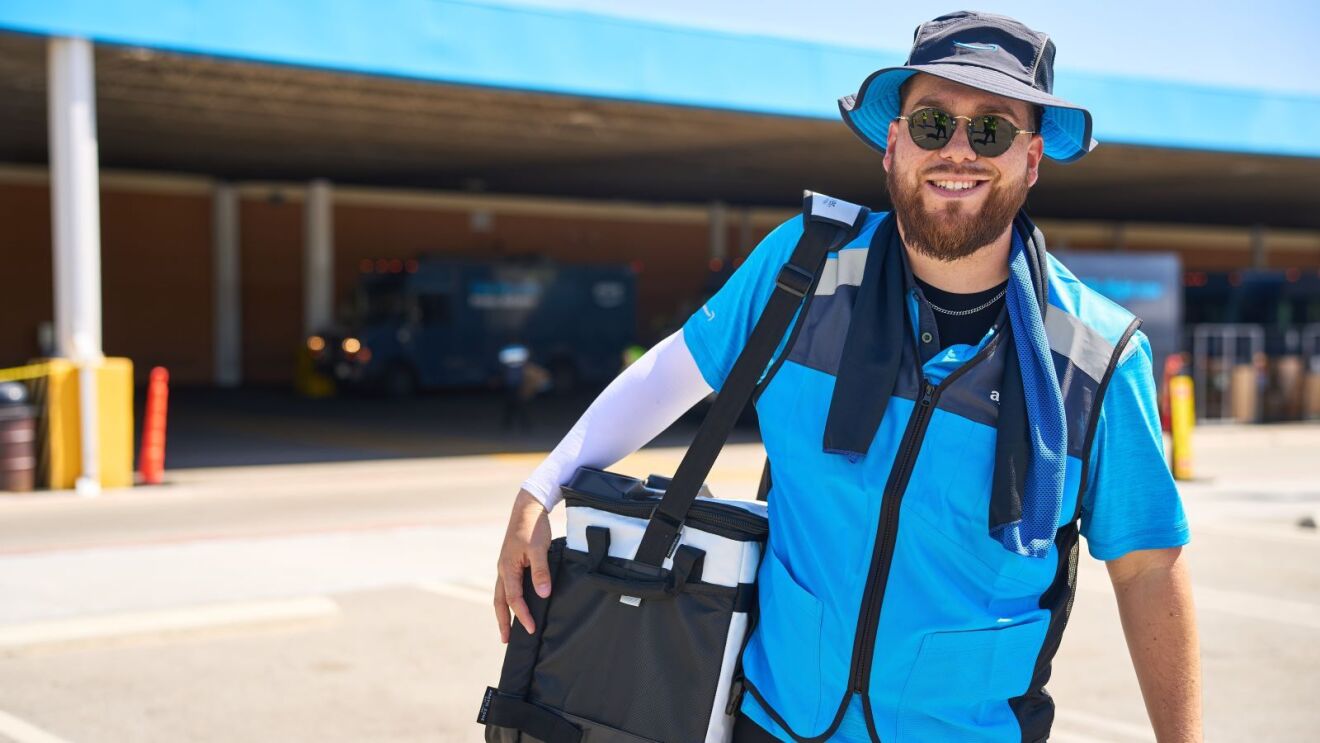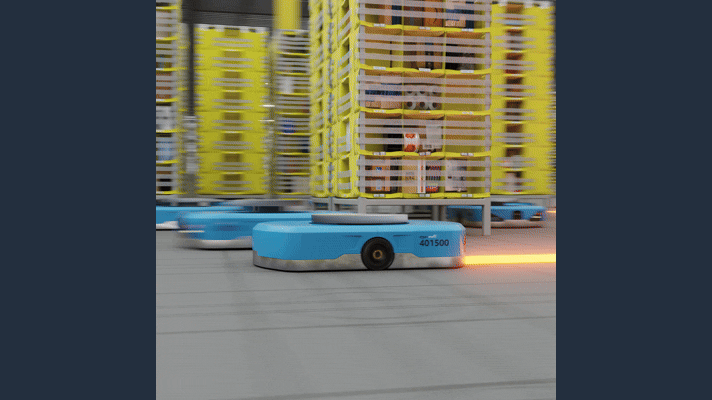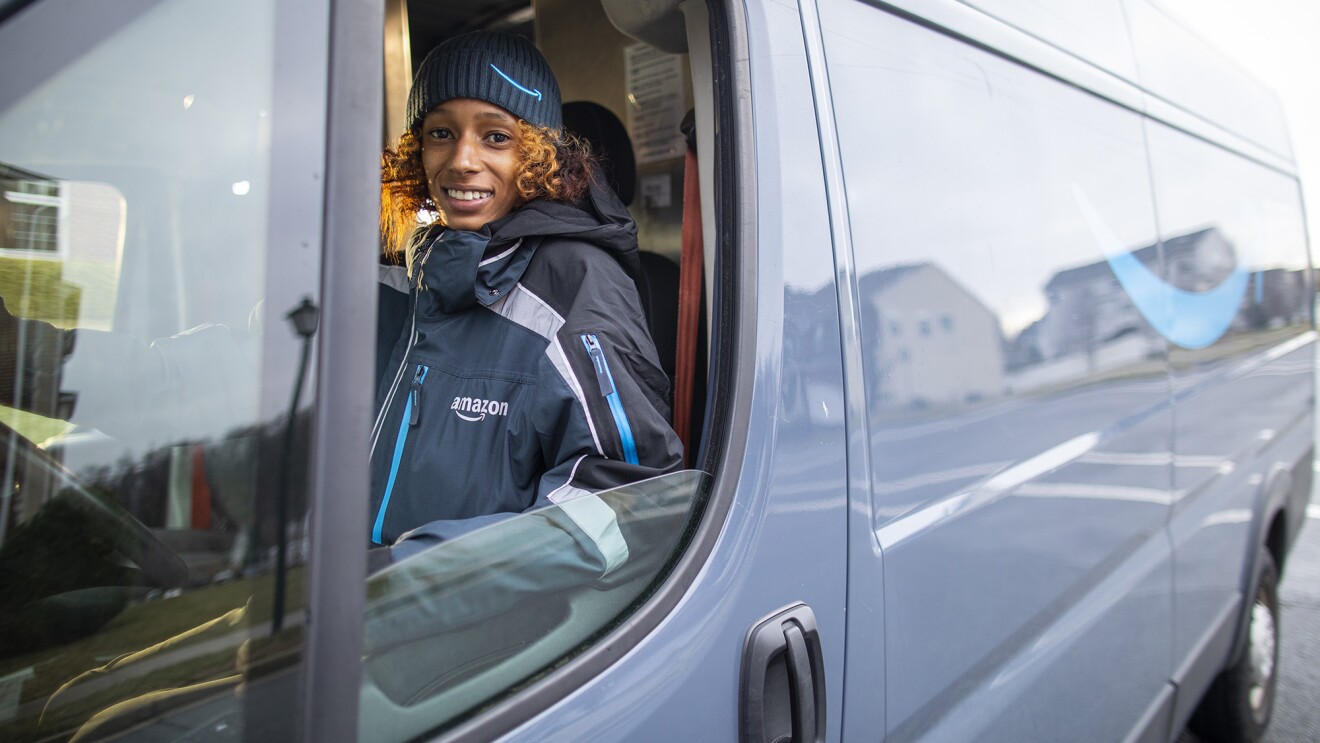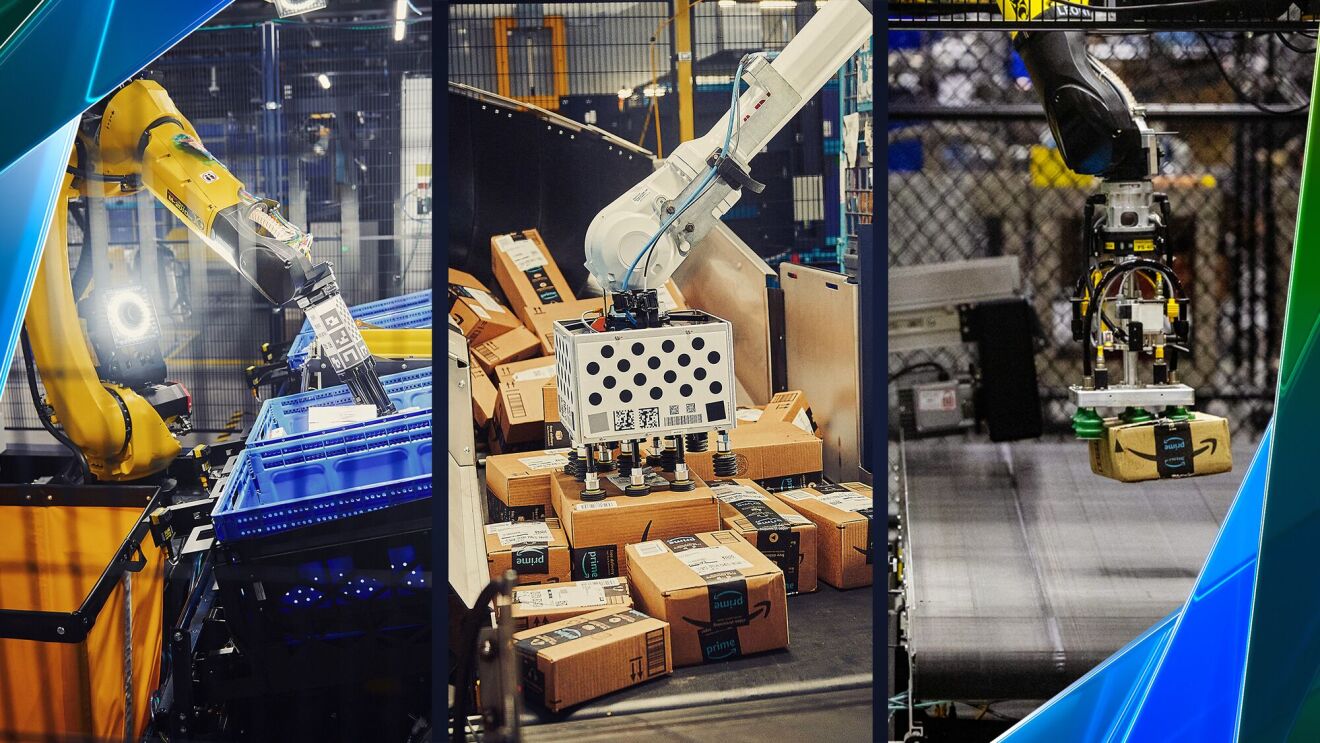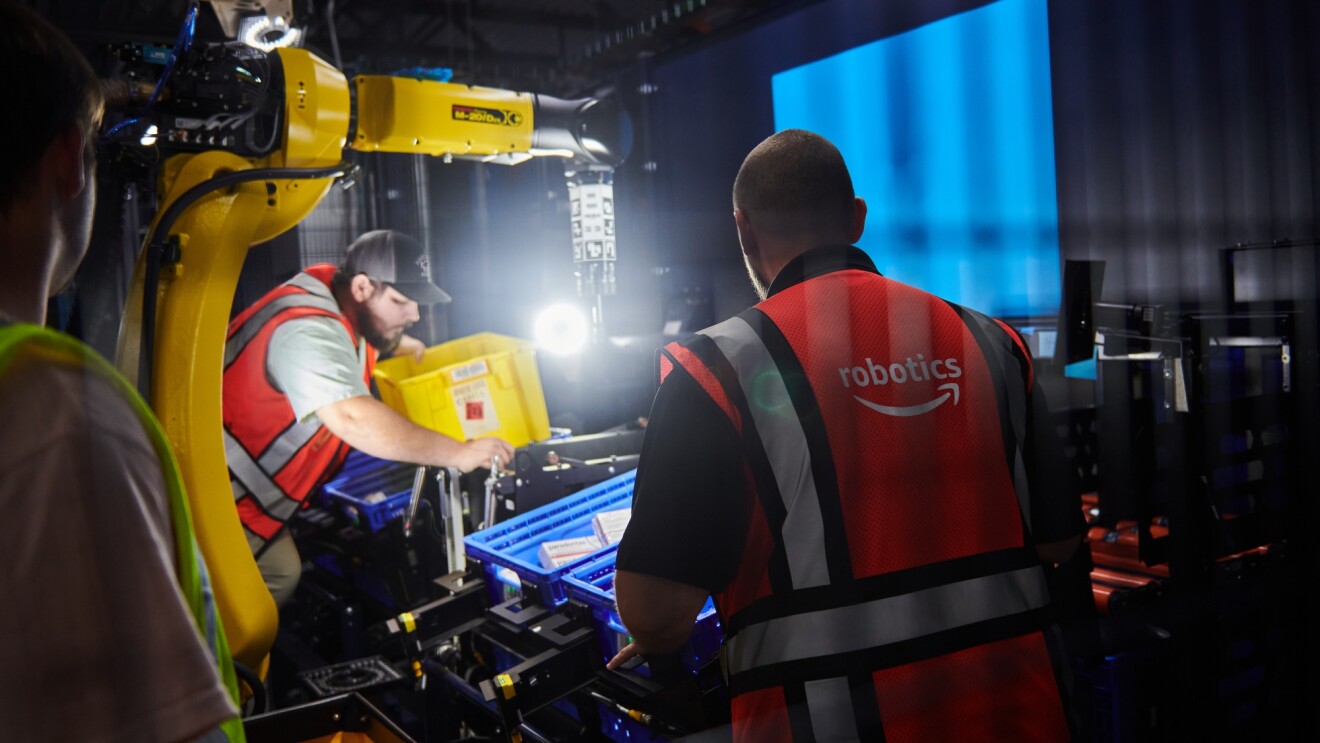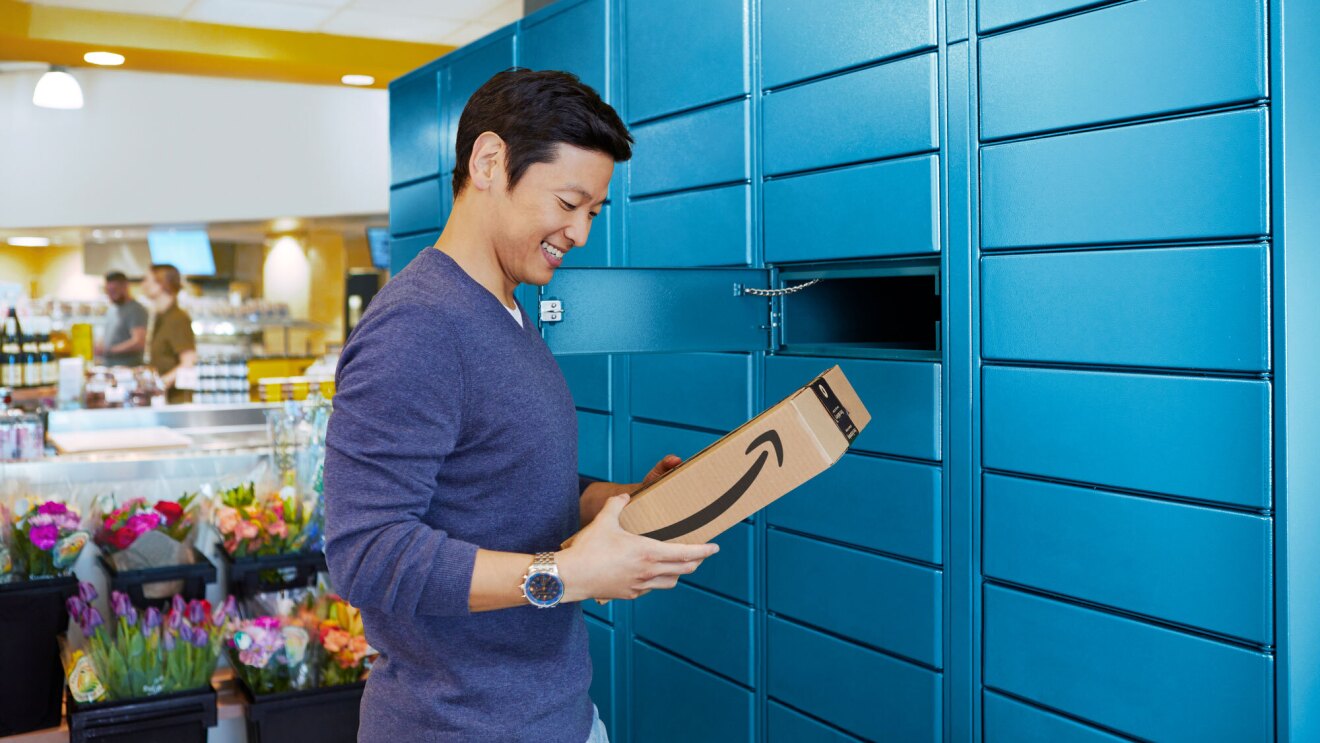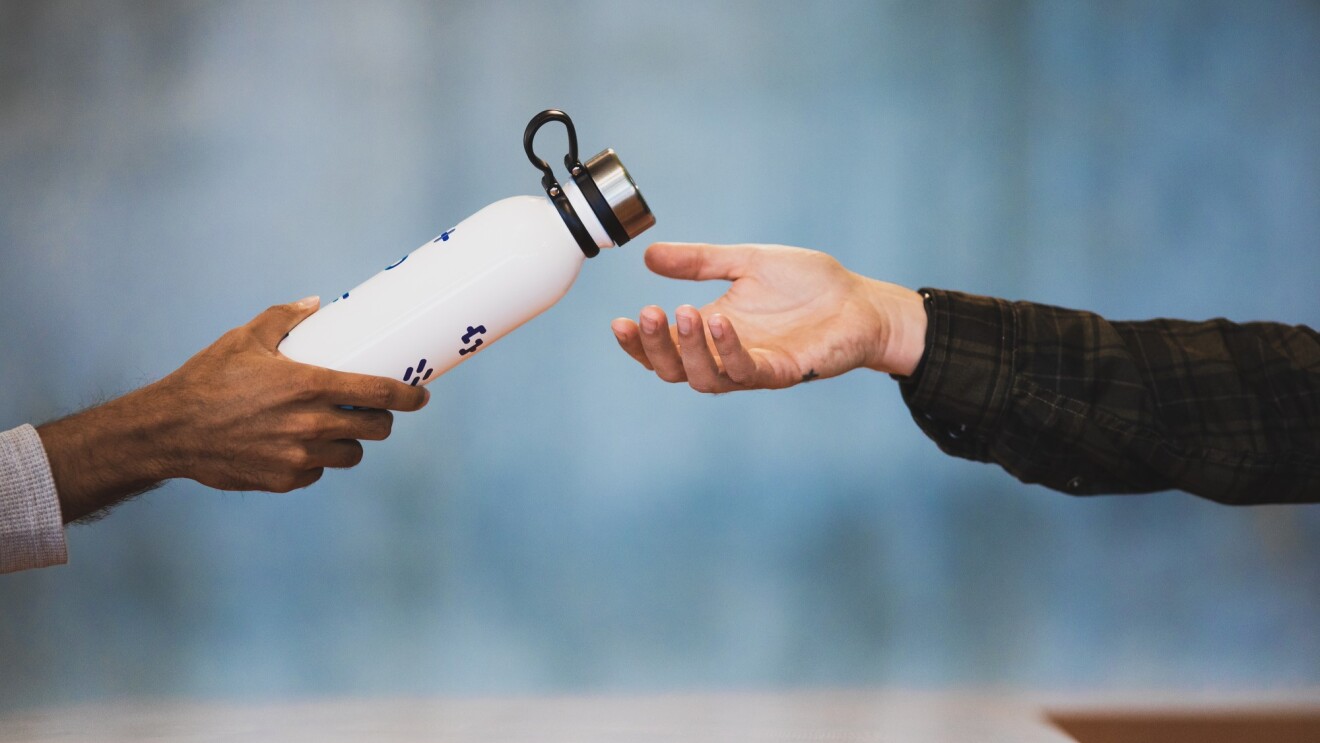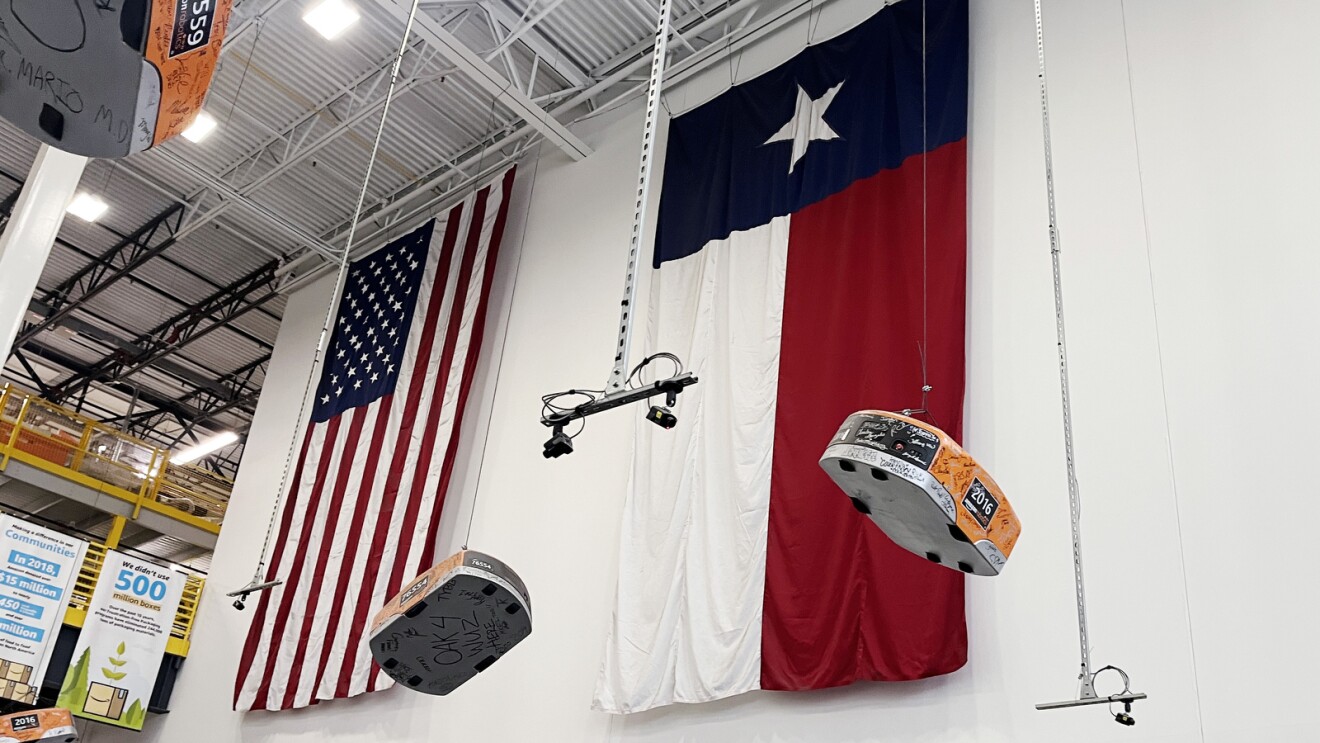
Page overview
Products arrive at the fulfillment center
The first step is called “Inbound.” This is where products from manufacturers and sellers arrive at our fulfillment center. Our Inbound team unloads the products and adds each item to a yellow tote that’s about two feet long and a little over a foot wide. The totes are then transported to the “Stow” station where they will be organized and stored.

Employees remove each item from the tote then place it in a coded bin within a large yellow storage tower—we call these “pods.” Products are stored in the pods until they are purchased. Small, flat, mobile robots find and retrieve the pods as items are purchased.

The mobile robots are guided by 2D barcodes on the floor of the fulfillment center as they move throughout the building—kind of like robotic street signs. The technology in this area also keeps a log ofeach item stored in the pod so our tracking system knowsexactly where items are located in the fulfillment center.
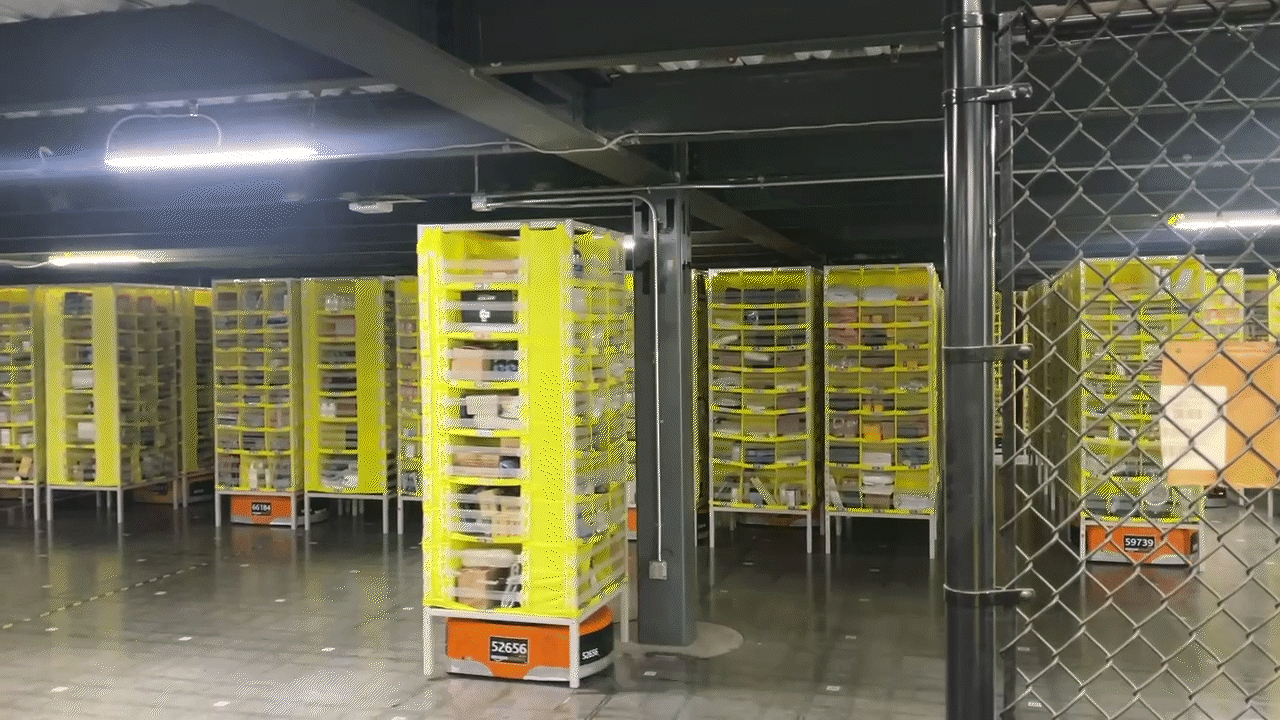
As a safety measure, employees wear intelligent tech vests when they need to interact with the robots. This may happen if they need to pick up a product that dropped. The vests signal to our nearby mobile robots to stop movement when an employee gets close.
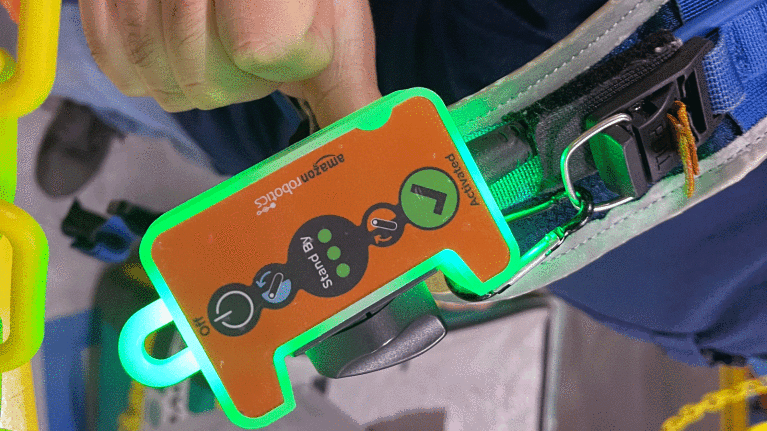

After you place your order, a mobile robot brings the pod containing your item to the “Pick” station. The employee at this station is directed by a shining light to pick the item you ordered from the pod. The item is checked for damage and then placed into a yellow tote. The tote has a physical and virtual map so we always know where the item is within the fulfillment center. After the tote is full, either by weight or dimensions, the employee pushes it onto a conveyor belt and it’s sent to the packing station.
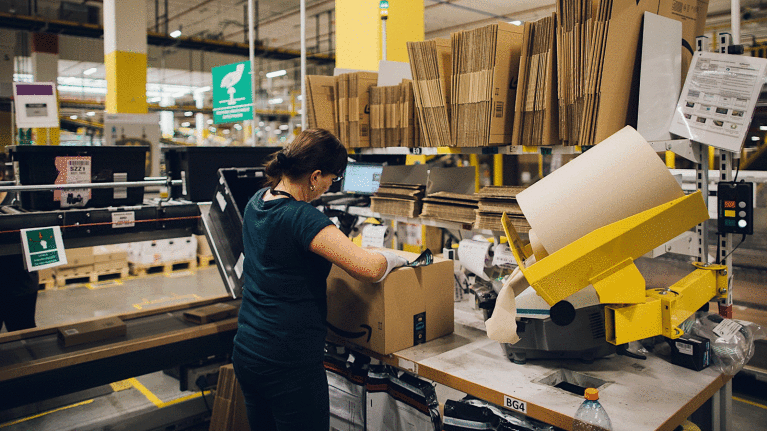
Next up, the item arrives at the packing station where it gets its box or bag. Once a tote arrives at the packing station, an employee scans its barcode so the system knows what items are inside. As each item is removed and scanned, the system suggests a box or bag size based on product dimensions. The employee selects the correct packaging from their station and begins to build it with tape. Our tape machines dispense the exact amount needed to seal each box.
Once sealed, a barcode is affixed to the top of the package. This label contains the information needed to generate a shipping label at the next stop.

The next step in the process is called “SLAM,” which stands for scan, label, apply, manifest. As packages arrive at the SLAM machine, barcodes are scanned, and the packages are weighed as they pass over a scale. This scale can detect discrepancies between the expected and actual weight of the item.

After the item passes over the scale, a robotic arm travels down to meet the box—this is where the shipping label is printed and affixed to the top of the box with a short blast of air. Once the box leaves the SLAM machine, it continues on to our shipping department.
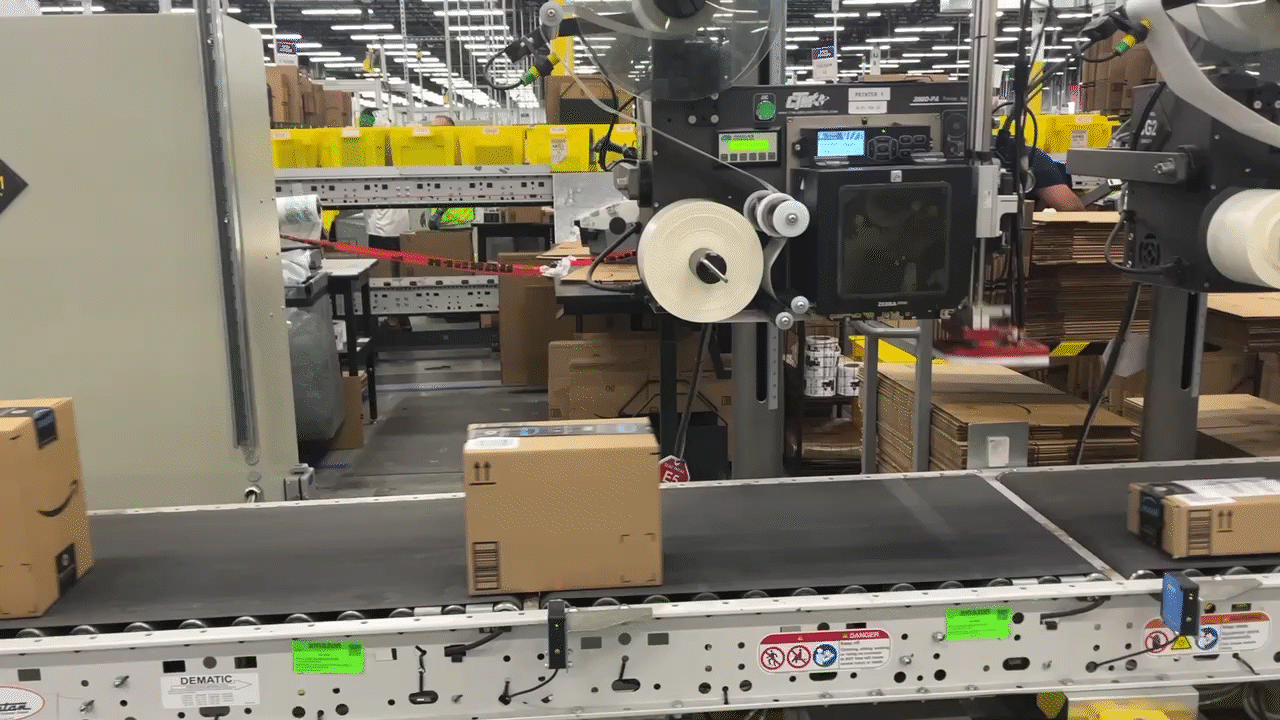
Next up, boxed and labeled packages head to the shipping sorter. They pass through a red scanner that reads the label and assigns each package a chute based on its destination. Packages are then routed down the chute that leads to their shipping trailer.

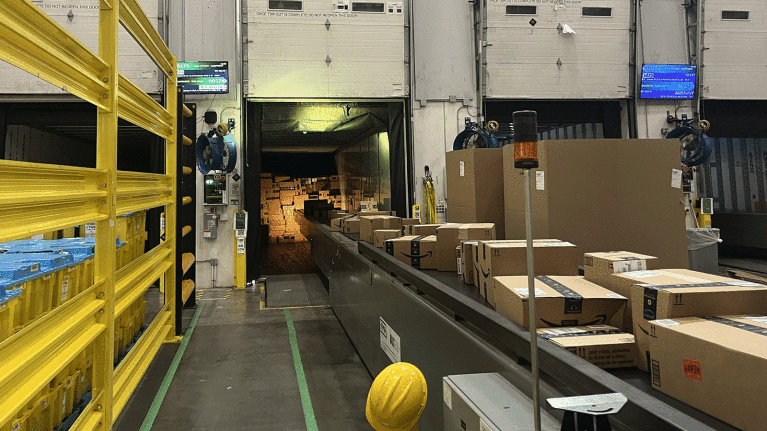
The outbound station features a line of bays where large trucks pull up. Employees pack the trucks from floor to ceiling with Amazon boxes. We pack the trucks this way to prevent shifting and damage, and to use fewer trucks to get closer to our climate goals. This takes a little extra time, but it’s worth it to fulfill our customer promise.
Once the items are loaded up in the truck, they move on to the next steps beyond my facility. Most of the items that leave here are headed to a sortation center where they will be routed to the proper outbound truck and sent to a delivery station before arriving on your doorstep.
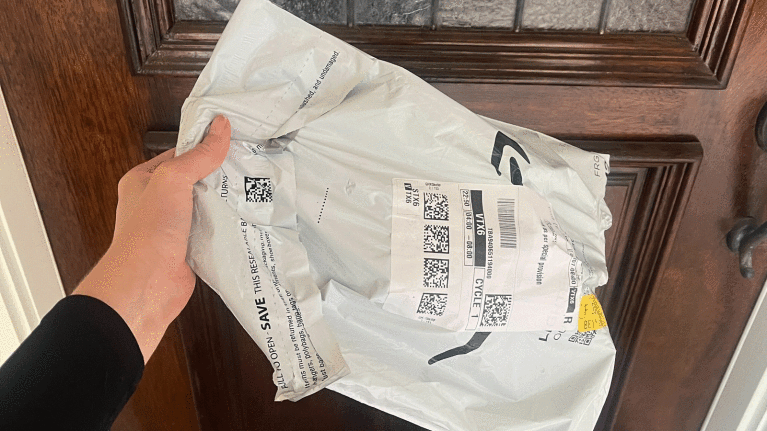

Trending news and stories
- Meet Project Rainier, Amazon’s one-of-a-kind machine ushering in the next generation of AI
- What’s new for Prime Day 2025? 4 things that make this year’s event different
- See Judge Judy Sheindlin in the trailer for ‘Justice on Trial,’ coming to Prime Video
- How to watch every ‘Jurassic Park’ movie on Prime Video



